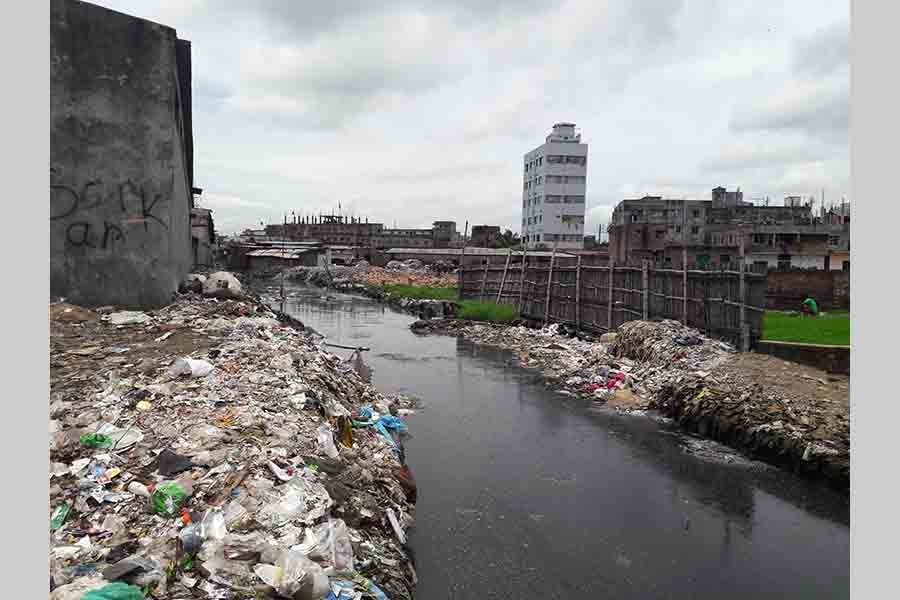Relocation of tanneries at Savar Tannery Estate (STE) amidst lots of noises is encountering something more than what can be described 'teething problems'. The process of transfer, though far from over, is yet to produce any environmental or trade benefit, primarily due to lack of preparedness on the part of the relevant government agencies. It is hard to ignore the fact that tanners who had to shift their units to new location did face many initial hurdles, financial or otherwise. They are still facing a number of obstacles including incomplete roads, slow process of gas connection and inadequate facilities for dumping of both solid and liquid waste.
The main objectives behind removing the tanneries from the middle part of the capital city were to stop pollution of the Buriganga river and free the residents of Hazaribagh and its adjacent areas from a stinking and filthy environment. Of course, policymakers' intention was not to achieve this goal by doing identical damage to another river and exposing the residents of some other area to similar sufferings. But it transpires from statements made by the leaders of Bangladesh Tanners Association (BTA) and the chief of the executing agency of the tannery hub that a few developments that have been taking place in and around STE are contrary to the desires of policymakers, environmentalists, tanners and local residents.
A number of stakeholders of the STE speaking at a function last Monday expressed their dismay at the malfunctioning of the central effluent treatment plant (CETP) and indiscriminate dumping of solid waste in the locality. Untreated factory effluent, according to them, is polluting the Dhaleswari and solid waste spreading a noisome stench in the locality. The tanners are in fear of facing backlash from the locals due to all these negative developments. The STE project director is also clueless about the disposal of solid waste as none is ready to take those. The head of STE executing agency admitted that 70 per cent of machinery imported for CETP are substandard and those would be returned. So, environment-related issues are yet to be addressed in a proper manner at the STE.
Yet another objective played a part in tannery relocation. That was about readiness of the foreign buyers to source finished leather and leather goods from Bangladesh because of better environmental scorecard. No Bangladesh tannery, however, has been able to sell even one square foot of finished leather to any international brand until now, for lack of international standardisation certificate. The problem of pollution in the tannery hub remains the main hurdle. The way things are going on, it does appear that the objective would remain unfulfilled for some more time.
What is happening with the STE is more or less common in most government projects. Implementation of many components of a project faces setback, resulting in extension of its duration and recurrent hike in costs. But given the importance of tannery industry that makes available raw materials to the country's second largest export industry-leather goods-- the situation must be made different. The management of the STE should be put under a separate company without any further delay to help solve the current problems and chart out a new path for proper growth of the tannery industry.


